Asian action and fantasy from 88 Films and Eureka
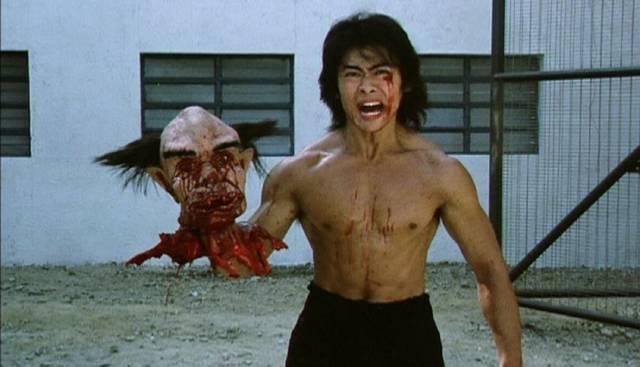
Different traditions offer different pleasures to movie-watchers. I’ve long had a taste for both Italian and Asian genre films, in part because they aren’t tethered to the kind of movie “realism” expected from Hollywood and the U.K. Narrative plausibility is less important than atmosphere and visual spectacle, with filmmakers willing to plunge into outrageous extremes in their efforts to provoke and entertain their audience (think Dario Argento, Lucio Fulci, Sergio Martino, Sion Sono, Takashi Miike). Sometimes this is simply a matter of staging obviously dangerous action sequences which would be unacceptable to corporate executives and insurance companies; but it can also involve perverse and disturbing displays of physical and psychological violence. I have never felt the urge to examine my own taste for these movies too closely – the intense feelings they trigger have long been a part of what attracts me to movies, perhaps because real life has been largely a calm and undemanding affair for me. I’ve never experienced any particular threats or dangers, but if I had I probably wouldn’t enjoy these vicarious thrills as much as I do.
Recent Asian movies I’ve watched are a mix of fantasy, comedy, horror, transgressive violence and traditional genre tropes. Although they vary in budget and skill of execution, they all immerse the Western viewer in a very different conceptual world.
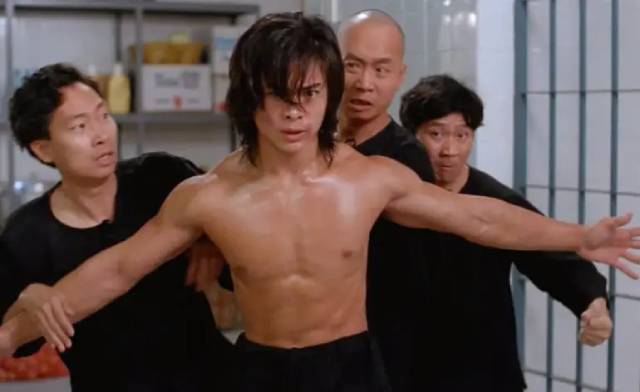
Riki-Oh: Story of Ricky (Lam Ngai-Choi, 1991)
Adapted from a manga, Lam Ngai-Choi’s Riki-Oh (1991) is the most extreme movie in this particular batch. Set in a near-future where prisons are run by corporations, with corrupt administrators in collusion with violent gangs, it’s about a young man convicted of manslaughter and sent to a maximum security facility. This familiar set-up, however, doesn’t prepare the unsuspecting viewer for what happens inside – as Ricky finds himself caught between violent gangs and targeted by the sadistic warden (who has a false eye in which he keeps a supply of Tic-Tac mints), the action escalates into Evil Dead-like extremes which are grotesque, shocking, and absurdly funny. With his arm deeply cut during a fight, Ricky uses his other hand and his teeth to re-tie his severed tendon so he can continue; in the climactic confrontation, the warden transforms into a giant martial arts monster … and so on, continually pushing the prison-movie cliches in unexpected directions. The first time I saw it with a couple of friends years ago, the effect was similar to the first time my friend Steve and I had watched Peter Jackson’s Bad Taste (1987): after gasping at every jaw-dropping moment, we’d brace ourselves and hope the filmmaker was able to top what we’d just seen with something more outrageous, grinning like little kids as the offences against good taste steadily escalated. The Riki-Oh Blu-ray from 88 Films is a vast improvement over previous lacklustre releases, featuring a strong transfer from a seemingly pristine source, with no less than four commentary tracks plus an interview with star Fan Siu-wong.
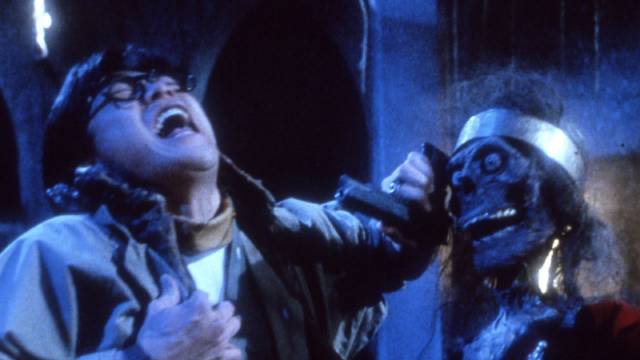
The Seventh Curse (Lam Ngai-Choi, 1986)
Five years before Ricky, Lam Ngai-Choi made The Seventh Curse (1986) for Golden Harvest, obviously influenced by the success of Raiders of the Lost Ark (1981), but loaded with Chinese fantasy and martial arts elements. Having interrupted a sacred ceremony in a remote area of Thailand, a Chinese archaeologist finds himself suffering from a blood curse which is destined to kill him a year later. He has to head back to the tribal area and find a sacred object to cure the curse, accompanied by his adventurer friend (an unexpected Chow Yun-Fat, on the cusp of international stardom in films by John Woo and Ringo Lam) and a reporter played by Maggie Cheung in one of her thankless roles as an annoying ditz. These three are faced with various supernatural menaces, including the tribe’s blood-thirsty god and a monster foetus which the evil sorcerer flings at people he wants to eliminate. Breathlessly paced, with steadily escalating action which climaxes in an extended martial arts melee in which the heroes fight a large number of monks on a gigantic statue of the Buddha, the movie delivers an exhilarating mix of adventure and horror leavened with comedy. The 88 Films Blu-ray includes both the English-dubbed international cut and the longer Hong Kong theatrical version, both looking excellent, with three commentaries, a brief interview with academic Patricia Wong, and a two-plus hour interview with star Chin Sui-ho covering his whole career.
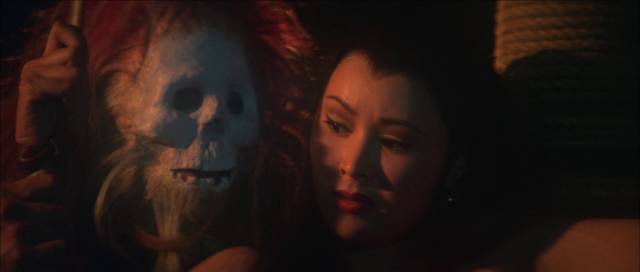
Human Lanterns (Ching Sun, 1982)
Shaw Brothers specialized in martial arts and wuxia movies, but occasionally branched out into other genres – Ho Meng-hua’s The Mighty Peking Man (1977), for instance. With Ching Sun’s Human Lanterns (1982), they took a fairly standard period martial arts story and grafted on explicit horror elements. Rather than rival martial arts masters, we get a pair of snobs vying to be the dominant figure in local society. Their competition focuses on the upcoming lantern festival; looking for a way to come out on top, Lung Shu Ai (Tony Liu) seeks out a man reputed to be a true master. This man, Chao Chun-Fang (Lieh Lo), turns out to be someone Lung once fought and whose woman he married. Despite this history, Chao seems to set aside any bitterness and they form an alliance to produce the best possible lanterns. What Lung doesn’t realize is that Chao is insane and the craftsman embarks on a series of kidnappings and murders, killing local women and using their flayed skin to create his elaborate lanterns. The mixture of martial arts and serial killer horror revitalizes some familiar tropes and gives the movie a distinctive atmosphere. Another excellent transfer from 88 Films, with a commentary and several interview featurettes.
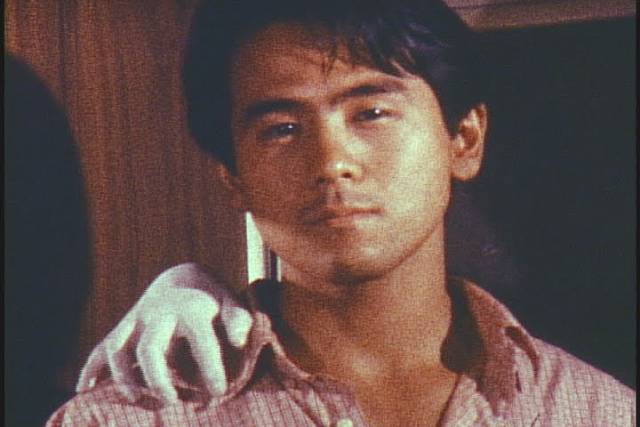
Bloody Muscle Body Builder in Hell (Shinichi Fukazawa, 1995)
The title of Shinichi Fukazawa’s Bloody Muscle Body Builder in Hell (1995) obviously signals that this movie isn’t to be taken very seriously, an indication confirmed by the tag line “The Japanese Evil Dead“. Like Sam Raimi’s famous debut, this small horror movie was made with more enthusiasm than money and an emphasis on gross-out effects. Shot on 8mm half a decade before Takashi Shimizu unleashed the first Ju-On movie, it features an ordinary house inhabited by a vengeful spirit – a woman murdered by her husband thirty years ago. The couple’s now-adult son returns to the house with a journalist and a psychic and his mother begins to possess and kill them one by one. The effects are gory if not convincing, with a lot of splatter and even some stop-motion animation (in his review, Kim Newman suggests it’s more Winterbeast than Evil Dead). The title refers to the son – a body builder who uses his weights as weapons to combat the ghost. There are some effective moments, but while it begins with some genuinely creepy atmosphere, it eventually strains too hard to be funny, not fully succeeding as either horror or comedy, though at only sixty-two minutes it’s over before it quite wears out its welcome. The image on the Terracotta DVD is what you’d expect given the source material (I’m not sure how much better the subsequent Blu-ray might be, though that has a bunch of extras not included on the DVD).
*
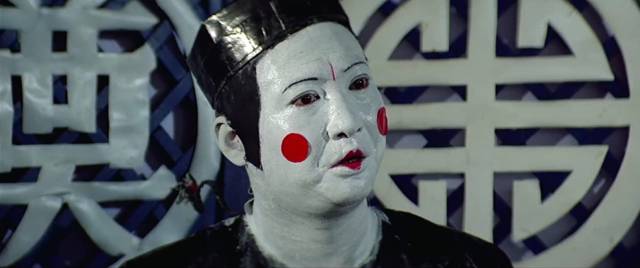
Sammo Hung
As I’ve mentioned before, Sammo Hung is my favourite among Hong Kong martial arts stars, perhaps because, of the famous trio which also includes Jackie Chan and Yuen Biao, Hung reminds me of my favourite Stooge, Curly. Slightly childlike, his large bulk is capable of a surprising and unexpected grace. For the past few years Eureka have been releasing a lot of his movies, both as actor and director, as well as occasional producer. It’s undeniable that his childlike quality leads to some crude and even tasteless comedy (fart jokes, a bit about inadvertently taking an aphrodisiac in a brothel and trying to conceal his erection), and as in many Hong Kong movies there are uncomfortable traces of sexism, but what nonetheless appeals are the elaborately choreographed action and fight sequences which are a form of ballet in which Hung and his co-stars perform what often seem impossible physical feats.
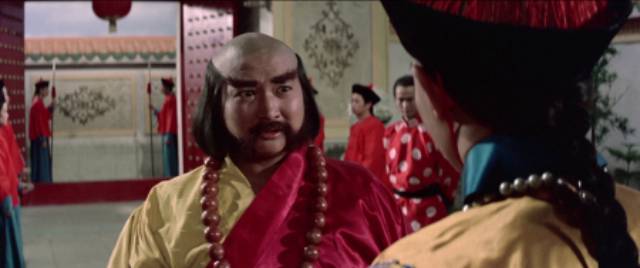
Of the recent releases, the earliest – The Shaolin Plot (Huang Feng, 1977) – seems atypical in light of Hung’s familiar persona because he plays a villain, a deadly monk working for a powerful lord who is determined to possess every important martial arts manual. Having obtained most of them, the monk’s boss sets out to steal the heavily guarded manuscripts held in the library of the Shaolin Temple. Here Hung once again served as the fight choreographer as well as playing a bigger-than-usual role; it was after this movie that he launched his own directing career with The Iron-Fisted Monk (1977).
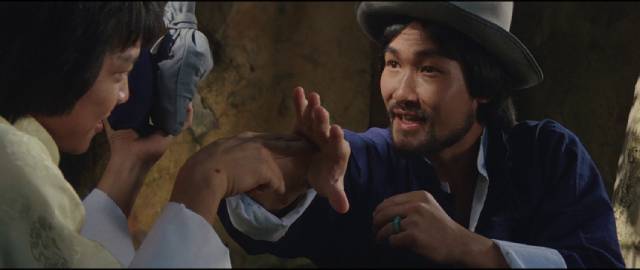
Knockabout (1979) was his fourth feature as director, with his signature mix of comedy and action and unsettling tonal shifts. Two brothers survive by petty crime, but when they’re beaten in a fight by a martial arts master, they decide they need to develop their skills and plead with the man to take them on as students. What they don’t realize is that their master is actually a vicious killer hiding under an assumed identity. When he kills one of the brothers, the other is taken on by a beggar who also happens to be a martial arts master; learning an unusual fighting style, the surviving brother is finally able to match his former sifu in a climactic confrontation.
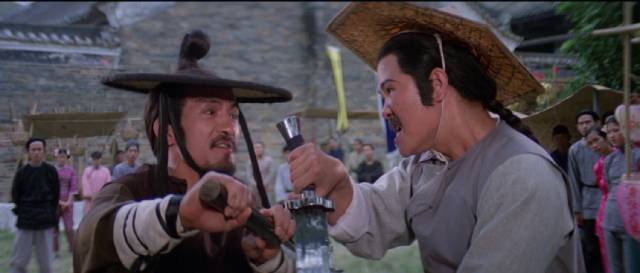
That evil master was played by Lau Kar-Wing who was also an excellent director in his own right and took charge of the next film Hung starred in, Odd Couple (1979), a showcase for bladed-weapon combat rather than kung fu. Two aging masters (played by Hung and Lau) meet every ten years on a mountaintop to match their skills with spear and sword, but each bout ends in a tie. Realizing they’re growing too old to continue, they agree to take on one student each to pass on their mastery and continue the competition by proxy. While there’s a heavy emphasis on comedy – Hung and Lau each play dual roles as an aging master and the respective younger student of the other – the film’s main purpose is the display of fighting skills in a series of training and combat sequences.
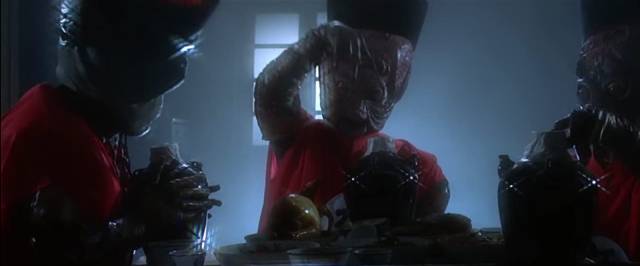
After a few more movies, with Encounters of the Spooky Kind (1980) Hung virtually launched the new genre of horror-comedy, which would reach its pinnacle in 1985 with Ricky Lau’s Mr. Vampire, produced by Hung. In between, he produced and starred in the less well-known The Dead and the Deadly (1982), directed by Wu Ma. What begins as a plot to commit fraud – a pregnant woman and her brother return her dead husband to his family for burial, expecting to inherit the family’s wealth – becomes complicated first by the dead man’s friend’s suspicion that he was murdered, then by the discovery that the dead man is actually alive and in on the scheme, then again by his actual murder. To top it off, his spirit takes possession of his friend in order to get revenge against the gang. There’s a lot of frantic slapstick action, particularly when Hung’s body is possessed by his dead friend’s spirit. Endlessly inventive, The Dead and the Deadly is funny and atmospheric and filled with elaborate physical comedy and engaging narrative complications.
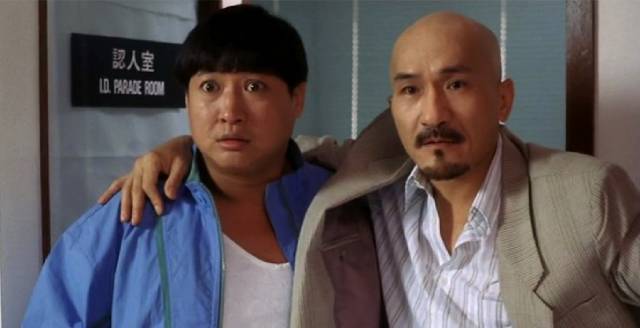
Although he seems so comfortable in a period setting, Sammo Hung has also made quite a few contemporary action movies, often leaning hard on comedy as in Lau Kar-Wing’s Skinny Tiger and Fatty Dragon (1990), a buddy-cop movie which teamed him up with Karl Maka as a pair of lowly officers who constantly get in trouble by breaking the rules. Hung is a bit naive, Maka more unscrupulous. There’s a fair amount of uncomfortable sexism, with the pair occasionally beating up women and setting up the villain’s girlfriend by making her look like an informer (she’s eventually murdered because of this), not to mention a pair of transsexual Thai killers who make it look as if Hung is beating up women in a public place … but the action sequences themselves are very well-staged, with the big final showdown between the two cops and a small army of gangsters in a derelict warehouse packed with elaborately choreographed, bone-crunching hand-to-hand combat.
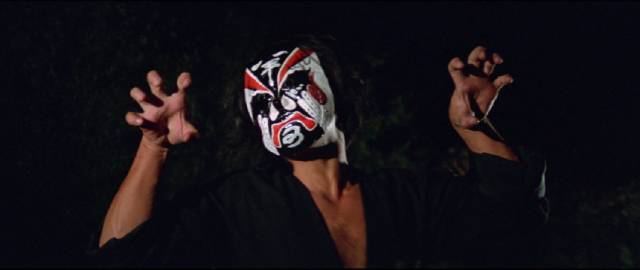
Sammo Hung wasn’t involved in Dreadnaught (1981), but this period movie fits comfortably among the rest of these releases. Directed by famed martial arts choreographer Yuen Woo-Ping, it stars Yuen Biao as Mousy, a cowardly man who works at his sister’s laundry. When a vicious killer hides out among the performers in a local theatre troupe, Mousy has several run-ins with him without realizing just how dangerous he is. But when the killer goes after his friends, he finally has to overcome his fear and learn how to fight (from the legendary Wong Fei-hung). The theatre setting adds colour and atmosphere, and as usual the action is mixed with both comedy and genuine menace.
All these disks offer excellent transfers, along with commentaries and featurettes. The Skinny Tiger release includes a second disk with Chiu Lee’s I Am the White Tiger (2018), an awkward but interesting documentary about martial artist, actor, fight coordinator and stuntman Mark Houghton, who transplanted from England to Indonesia where he trained as a martial artist before going to Hong Kong and becoming the protege of actor, director and martial arts master Lau Kar-Leung.
Comments